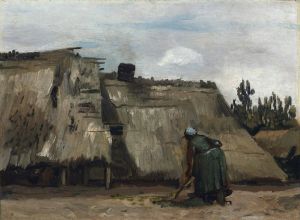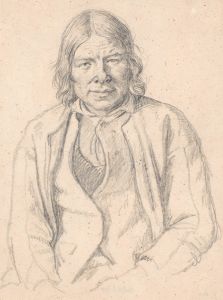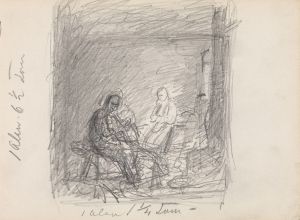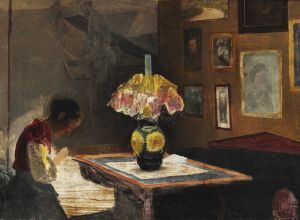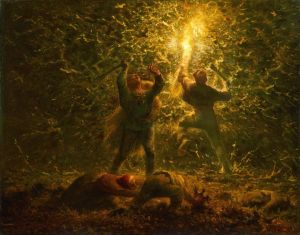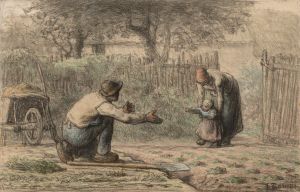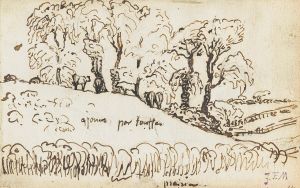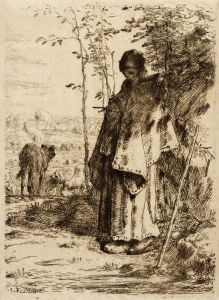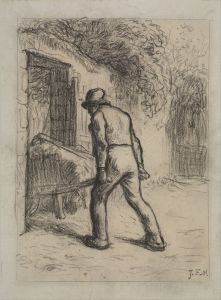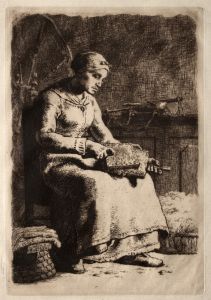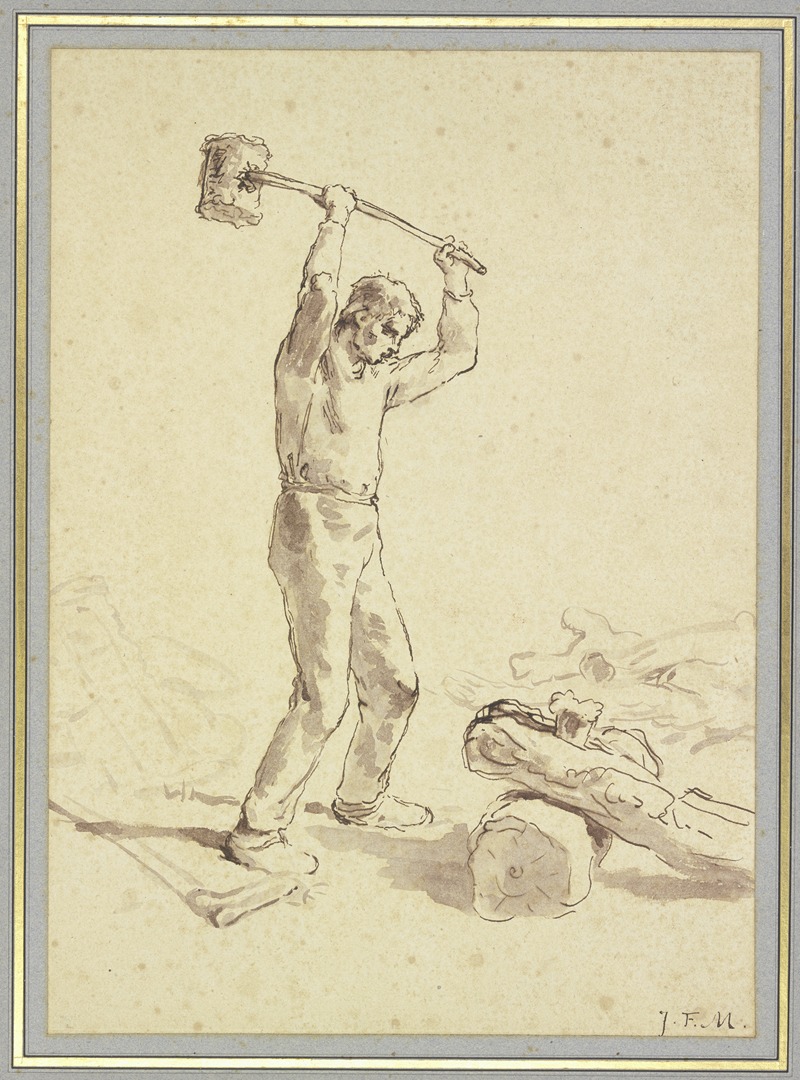
Le fendeur de bois
A hand-painted replica of Jean-François Millet’s masterpiece Le fendeur de bois, meticulously crafted by professional artists to capture the true essence of the original. Each piece is created with museum-quality canvas and rare mineral pigments, carefully painted by experienced artists with delicate brushstrokes and rich, layered colors to perfectly recreate the texture of the original artwork. Unlike machine-printed reproductions, this hand-painted version brings the painting to life, infused with the artist’s emotions and skill in every stroke. Whether for personal collection or home decoration, it instantly elevates the artistic atmosphere of any space.
Jean-François Millet, a prominent French painter and one of the founders of the Barbizon School, is renowned for his depictions of peasant life. One of his works, "Le fendeur de bois" (The Woodcutter), exemplifies his focus on rural laborers and the dignity of their work. Painted in the mid-19th century, this artwork reflects Millet's commitment to portraying the everyday lives of the working class, a theme that was central to his oeuvre.
Millet was born in 1814 in the village of Gruchy, Normandy, into a family of farmers. His upbringing in a rural environment deeply influenced his artistic vision and subject matter. After studying art in Cherbourg and Paris, Millet moved to Barbizon, a village near the Forest of Fontainebleau, where he became a leading figure in the Barbizon School. This group of artists sought to break away from the formalism of academic art and instead focused on naturalism and the depiction of rural life.
"Le fendeur de bois" captures a solitary figure engaged in the labor-intensive task of splitting wood. The composition is simple yet powerful, emphasizing the physicality and concentration required for the task. Millet's use of earthy tones and his attention to the textures of the wood and the worker's clothing contribute to the realism of the scene. The painting reflects Millet's belief in the nobility of manual labor and his empathy for the rural poor, themes that resonated with the social and political climate of 19th-century France.
Millet's work was often met with mixed reactions during his lifetime. While some critics praised his honest portrayal of peasant life, others criticized it for its perceived lack of refinement and idealization. Despite this, Millet's influence on later artists was significant. His focus on everyday subjects and his naturalistic style inspired future generations of painters, including Vincent van Gogh, who admired Millet's ability to convey the dignity and humanity of his subjects.
"Le fendeur de bois" is part of a broader body of work by Millet that includes other notable paintings such as "The Gleaners" and "The Angelus." These works collectively highlight the artist's dedication to capturing the essence of rural life and the struggles and resilience of the peasantry. Millet's art serves as a historical document, providing insight into the lives of 19th-century French rural workers and the societal changes occurring during that period.
Today, Jean-François Millet is celebrated as a master of realism and a pioneer in the depiction of rural labor. His works are housed in major museums around the world, where they continue to be studied and admired for their artistic and historical significance. "Le fendeur de bois," like many of Millet's paintings, remains a testament to his skill as an artist and his deep compassion for the subjects he portrayed.






